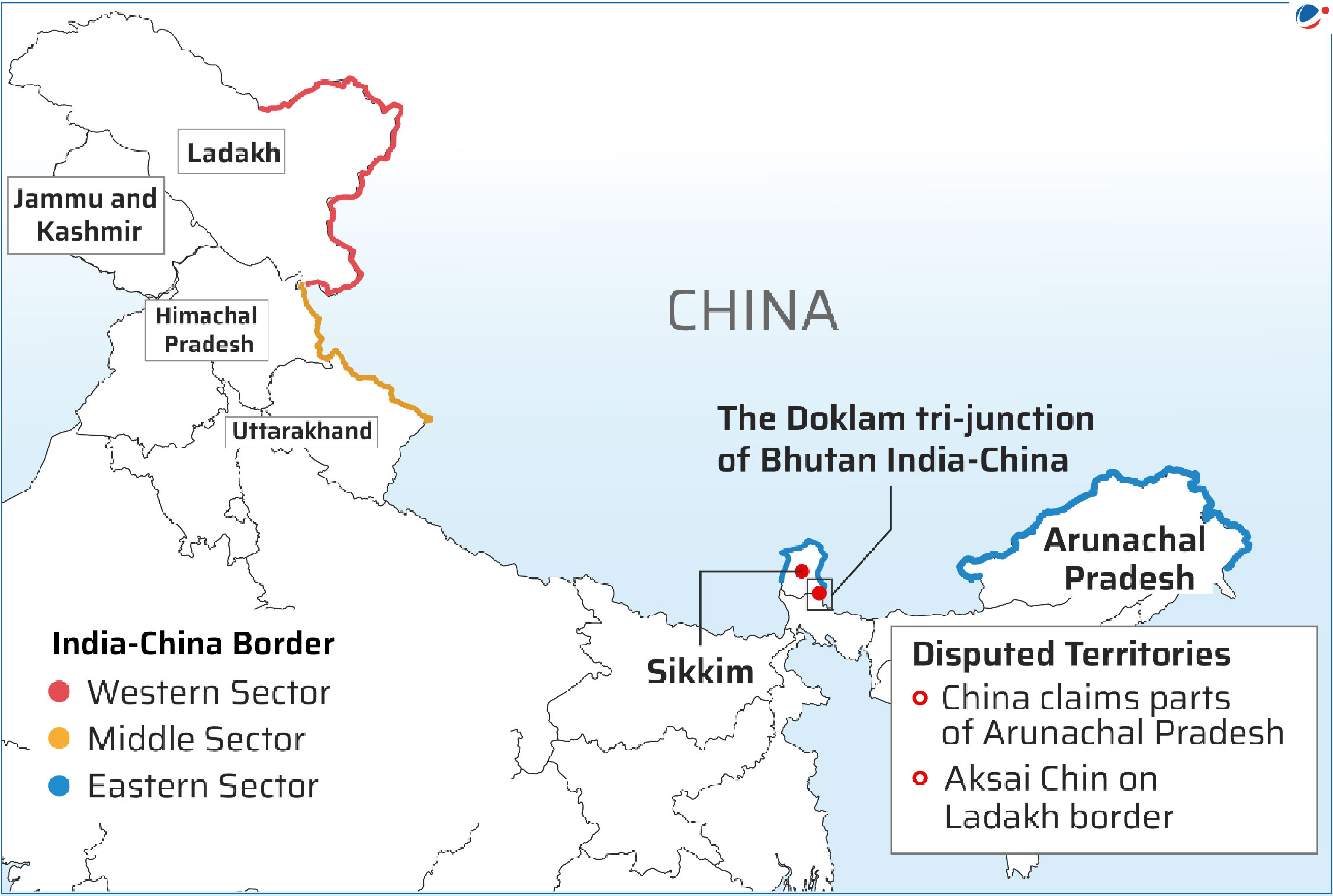Foreign Ministers of India and China agreed that prolongation of military standoff along the Line of Actual Control (LAC) is non-beneficial for either side, emphasizing on the need for early dispute resolution.
Key developments of meeting
- India highlighted the need to redouble efforts to achieve complete disengagement from remaining areas in Eastern Ladakh and restore border peace and tranquillity.
- Eastern Ladakh standoff erupted in 2020 following a violent clash between troops in Pangong lake area.
- They agreed that Working Mechanism on Consultation and Coordination on India-China Border Affairs (WMCC) should hold an early meeting.
India-China border dispute
- India’s 3,488-km border with China is not clearly demarcated and there is no mutually agreed LAC along certain stretches.
- India-China border is divided into three sectors:
- Western sector (Ladakh): India considers the Johnson Line as border which includes Aksai Chin in Indian territory whereas China considers the MaCartney-MacDonald Line as border.
- Middle sector (Uttarakhand and Himachal Pradesh): Largely undisputed area.
- Eastern sector (Arunachal Pradesh and Sikkim): Alignment of LAC is along the MacMahon Line, drawn during 1914 Simla Convention.
- China rejects MacMahon line and claims entire Arunachal Pradesh as part of Tibet Autonomous Region.
Way Forward
The three mutuals – mutual respect, mutual sensitivity and mutual interest will guide bilateral ties between India and China.






